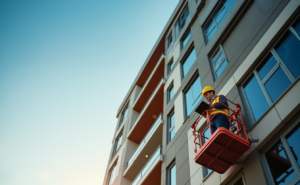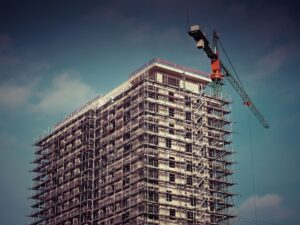The weather in London has definitely changed this month and people are now noticing condensation, water damage and dampness in flats – but what should they do about it?
Dampness in a leasehold flat is a common issue that can lead to significant structural damage and health problems if not addressed promptly. This comprehensive Strangford Management guide aims to provide leaseholders with a clear understanding of the causes, signs, and remedies.
1. Understanding Damp
Damp is a condition that occurs when excess moisture or water accumulates within the structure of a building. This moisture can originate from various sources, including leaks, condensation or rising damp from the ground. Understanding the cause of the damp is crucial in devising the appropriate treatment strategy.
2. Who is Responsible for Damp in a Leasehold Flat?
In leasehold properties, the responsibility for repairs, including damp-related issues, lies primarily with the freeholder or the management company. However, the terms of your lease will determine the exact division of responsibilities.
Typically, the freeholder is responsible for maintaining the exterior and structural integrity of the building. If dampness is caused by a defect in the building’s exterior or structure, such as a leaky roof or a faulty damp-proof course, the responsibility to fix it usually falls on the freeholder.
However, if the dampness is caused by internal factors such as condensation from daily activities like cooking and bathing, it’s often the leaseholder’s responsibility to address the issue.
3. Recognising the Signs of Damp in a Flat
Identifying the signs of damp early can prevent more serious problems down the line. Here are some common signs to look out for:
- Mould growth: The presence of mould, particularly black mould, is a clear sign of dampness.
- Discolouration on the ceiling: Stains on the ceiling could indicate that moisture is penetrating from above.
- Condensation on windows: If you notice condensation on your windows, especially on the outside, it could be a sign of poor ventilation or structural issues.
- Water stains in corners or near doorways: These could indicate leaks from above or below ground level.
- Musty smells: A musty odour is often a sign of dampness and could indicate the growth of mould if left untreated.
4. The Hazard of Ignoring Damp
Neglecting to treat damp can lead to severe consequences, both for the property and the health of the inhabitants.
Damp can result in the growth of mould, which releases toxic spores into the air. These spores can cause respiratory problems, allergic reactions, and asthma attacks.
If untreated, mould can quickly spread throughout the property, causing extensive damage. Once established, removing it can be a challenging and costly affair.
5. Identifying the Causes of Dampness in Flats
Understanding the root cause of damp is crucial in addressing the issue effectively. Here are some common causes:
- Building Materials: Substandard materials used in construction can allow water to infiltrate the walls, floors, and ceilings. Lack of proper ventilation can exacerbate the issue, leading to the growth of mildew and a musky smell.
- Condensation: Condensation occurs when water vapour in the environment settles on cold surfaces, such as walls and ceilings. This can create an ideal environment for mould growth.
- Poor Ventilation: Proper ventilation is crucial in preventing dampness by removing excess moisture from the air.
- Leaky Windows or Doors: Leaks around windows or doors can allow outside moisture to accumulate inside the property.
6. How to Handle Damp in a Leasehold Flat?
If you notice signs of damp in your flat, here are some steps to address the issue:
- Check for Leaks: If you detect any water leaks in your home, such as from faucets or pipes, fix them immediately. This can prevent water from seeping into your walls or flooring, which can lead to mould growth.
- Ventilate: Keep your windows open as much as possible to allow air to circulate and reduce moisture levels in your home.
- Maintain Gutters: Regularly check and maintain your gutters to minimise water damage, especially during heavy rainfall.
- Inspect for Water Damage: Check for water damage under your kitchen cabinets and treat any found mould or mildew immediately.
- Install a Dehumidifier: If the dampness is originating from inside the property, consider installing a dehumidifier to help control the moisture levels.
- Use Anti-Mould Paint: Consider using anti-mould paint on surfaces prone to dampness. This can help prevent further mould growth and damage.
7. What to do if the Freeholder Won’t Address the Damp Issues?
If your freeholder is unresponsive or refuses to address the damp issues, you may need to take further action.
First, try to resolve the issue amicably with the freeholder. If they don’t respond, consider contacting your local council’s environmental health department to lodge a complaint. They can send an inspector to assess the property and determine the necessary course of action. You could also search out an expert via The Property Care Association (PCA).
In extreme cases, you may consider taking legal action against the freeholder. However, this should be a last resort and requires careful consideration and legal advice.
8. The Importance of Ventilation in Preventing Damp
Proper ventilation is vital in preventing dampness in flats. It helps to remove excess moisture from the air, reducing the risk of condensation and subsequent mould growth.
Make use of extractor fans in your kitchen and bathroom, and consider installing additional ventilation if necessary. A dehumidifier can also help to control moisture levels, particularly in more humid areas of the flat like the bathroom or kitchen.
9. Long-term Solutions for Dampness in Flats
Preventing damp is easier and more cost-effective than treating it. Investing in good ventilation and insulation can help to keep damp at bay.
Extractor fans in the bathroom and kitchen are particularly effective at removing moisture-laden air. Additionally, keeping your heating at a constant temperature and ensuring your home is well-insulated can help to prevent condensation on cold surfaces.
10. Final Thoughts
Dealing with dampness in flats can be a daunting task, but with the right knowledge and approach, it is manageable. It’s crucial to identify the cause of the damp, take appropriate steps to treat it, and implement preventive measures to avoid future damp problems.
Do not hesitate to seek professional help if the damp issue persists or if you’re unsure about how to tackle it. Always remember, a damp-free home is not just about maintaining the structural integrity of your property; it’s also about ensuring a healthy living environment for you and your loved ones.
If you found this guide helpful or have any further queries, feel free to contact us. Our team of experts would be more than happy to assist you with your issue and provide you with advice on how best to resolve it.
Read more…
- EWS1 Form Explained: Hidden Requirements Your Surveyor Won’t Tell You
- NHBC Cover Explained: Your Essential Guide for Leaseholders (2025)
- Ministers Set £30bn Cladding Crisis Deadline for 2029
- Service Charge Disputes Made Simple: Your Rights as a Leaseholder
- Breaking: Leasehold Reform Scraps Two-Year Wait Rule From January 2025




